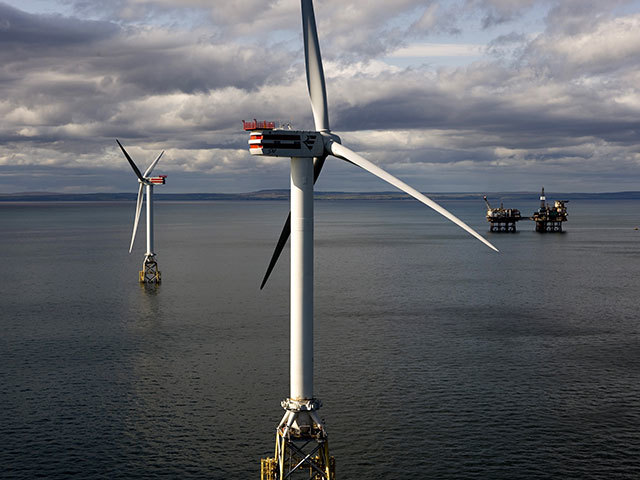
The lines between renewables and upstream technology will begin to blur as the industry works to combat Brent benchmarks, according to JDR’s chief technology officer.
Speaking at this year’s Offshore Technology Conference (OTC), James Young said the industry’s latest downturn will force the sectors to create more synergies in a bid to reduce costs.
“I think that’s going to be the sentiment going forward – to have the offshore technology, so it can apply to both the offshore oil and gas and renewables sectors,” he said.
“That’s what we would want to see.
“I think there will be some blurring of the lines in terms of the offshore upstream and renewables industries and there will be some convergence of the two.”
JDR engineers and manufactures subsea production umbilicals, subsea power cables and Intervention Workover Control Systems (IWOCS) for the offshore oil and gas industry. It also develops inter-array cables for offshore wind, wave and tidal energy projects.
However, Young said the sector’s “either, or” approach of developing technology for the two industries would be phased out and replaced with a strategy that includes developing tech which can be seamlessly applied to either.
“Perhaps renewable technology has been coming into it’s own, as we’ve seen with the development of offshore wind, but it should have a greater role to play in offshore oil and gas,” he said.
A “greater role to play” includes renewable sources powering subsea systems, according to Young.
He added: “I think it’s really great to be looking at long term and how these different energy sources work together. The renewables sector need the help of the oil and gas sector in terms of its experience.”
Creating closer ties could also help safeguard jobs in challenging times, Young said.
JDR has used its renewable division to stem a potential skills hemorrhage from its oil and gas division.
“Last year we had to restructure, but we were able to safeguard jobs by moving people between the two roles,” he said.
“The engineers we’ve been working with have been able to move quite quickly between the two industries.”
The firm is currently investing in its horizontal lay-up machine (HLM).
The new HLM is one of the largest in the world. It has 16 carriers each capable of holding 20 tonnes of steel tube on a reel. JDR’s existing 4000Te carousels mean that JDR can manufacture up to 4,000-tonnes in one length.
JDR has expanded its Hartlepool manufacturing facility to 280,000 square feet to accommodate the installation. It’s expected to be commissioned in summer 2016.
Ultimately, it will help the firm more evenly balance its workbook between upstream and renewables, diversifying its portfolio and protecting its bottom line, according to Young.
He added: “I think it’s a 50/50 split, because we can see this trend coming through both industries.”
Recommended for you
